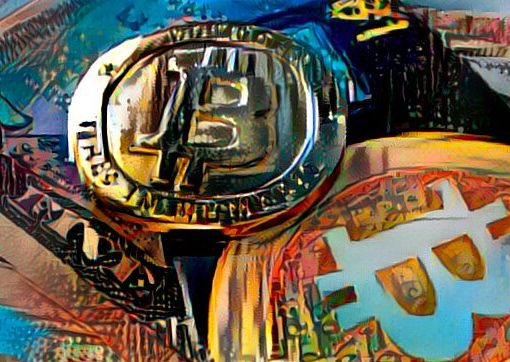Larry Ellison will be remembered for founding one of the most successful companies of our times. Only time will tell if he will also be remembered as king of the acquisition.
Ellison, who vacated his CEO post though will continue on as chief technology officer at Oracle (ORCL), is a product engineer by training.

Deal king
But he’s also an excellent salesperson to corporate clients and extremely good in analyzing whether potential acquisitions made sense.
In a tech world full of acquisition disasters (the aQuantive acquisition by Microsoft sounds familiar?), Larry Ellison has shone brightly by completing many successful acquisitions and integrations.
As CEO, Larry’s acquisition strategy was to buy software companies that were selling complementary products, and then incorporated the acquired functionality into Oracle’s main product line.
This allowed him to offer its clients and prospective clients products with very rich feature sets. Since for a long time Oracle was exclusively a software company, this strategy helped Larry lock his clients into Oracle’s true profit center—the business of selling software updates.
Once Oracle’s software has been put in place, it cannot be switched out easily—it becomes an integral part of a company’s business processes and the switching costs to the client are enormous.
Transformative
The $10 billion 2005 acquisition of PeopleSoft was transformative for Oracle. Prior to that, Oracle had been known only as a database company (i.e., the electronic “containers” that hold data).
PeopleSoft was a producer of application software (i.e., the programs employees use to capture or enter data that will be stored in a database).
After the PeopleSoft acquisition and subsequent purchases of application software providers Siebel (2006), Hyperion (2007), and BEA (2008), Oracle became a major player in the field of enterprise application software.
Oracle’s 2010 acquisition of computer/server maker, Sun Microsystems extended its product footprint into hardware.
While some in the investment world derided the acquisition, I believe it has had an extremely beneficial effect on the Oracle’s profitability.
Oracle worked for roughly the first twenty years of its existence on increasing the functionality and user acceptance of its database products. It began its foray into developing application software internally in the late 1990s.
However, considering that the firm ended up buying PeopleSoft a few years’ later, we can presume that management decided that it was easier and quicker to develop a presence in application software by buying existing competitors rather than building it from scratch.
Existing competitors have well-established client bases to whom Oracle’s primary database products could also be sold.
Bagged quarry
These are some of Oracle’s most successful acquisitions, carefully planned and executed by Larry Ellison:
1. i-flex in Banking and Financial Services: August 2005 for $900 million
2. MetaSolv in Communications: October 2006 for $219 million
3. Siebel Systems in CRM: January 2006 for $5.85 billion
4. Hyperion Corporation in Enterprise Performance Management: March 2007 for $3.3 billion
5. Agile Software in Product Lifecycle Management: May 2007 for $495 million
6. Sun Microsystems in Hardware: January 2010
I expect Oracle’s acquisitions of Endeca, RightNow, InQuira and Taleo in 2011 will further add to its software revenues. In the near future Oracle may be targeting even more interesting acquisitions such as Workday (WDAY) or Salesforce.com (CRM) in my opinion.
Being successful in acquisitions in any industry it is not an easy task. During the last shareholder meeting of Berkshire Hathaway, Warren Buffet said that mergers and acquisitions are often so bad, because big companies have people working full time solely to look for these deals.
As a result, they are compelled to complete some, even if ultimately they don’t make much business sense.
Ellison’s legacy
That’s their job and that’s why they are being paid. From the outside at least, it appears that the acquisition culture at Oracle is different, all their acquisitions make good business sense, and they are implemented in a timely manner – ostensibly without market or stakeholder pressure.
This is the biggest legacy of Larry Ellison at Oracle, and a culture that Oracle must work hard to preserve. As long as Oracle continues to make smart acquisitions, they will go far.
Portfolio overview
The return of the S&P 500 in September 2014 was -1.55%, as compared with -3.30% for my Dividend Paying Large Caps portfolio. Year-to-date my portfolio is up 7.21% as compared with 6.70% of the S&P 500.
In September Bed, Bath and Beyond (BBBY), and Google (GOOG) performed well. They were up 2.4%, and 1.0% respectively. BBBY continues its recovery after the big drop that it faced this year from January to May.
The fundamentals of the company are still strong and I’m sure this is one of the stocks that will continue trending up for the remainder of 2014.
In one day in September BBBY was up 7.4% and saw eight positive estimate revisions suggesting that more solid trading could be ahead for the company.
Google (GOOG), continues to amaze me, recently a new project was announced that will include the creation of giant TV’s.
The project is led by Mary Lou Jepsen, a former Massachusetts Institute of Technology professor best known for co-founding the One Laptop Per Child Project, an ambitious but ultimately unsuccessful project to give cheap laptops to tens of millions of children in poor countries.
Ms. Jepsen has also co-founded three startups around display technology. The most recent, Pixel Qi, specializes in low-power displays that can be read in direct sunlight.
She now heads the display division inside Google X, Google’s futuristic products lab. With so many interesting products in the pipeline, Google is a one to hold for a long time.
Underperformers
In September my holdings in oil companies did poorly. Lukoil (LUKOY) was down -8.3% and Ecopetrol (EC) -9.6%. Those two stocks led to the underperformance of my portfolio vs the S&P 500 this month.
As the economy recovers worldwide, I expect crude oil prices to go up and these stocks to recover rapidly.
The positive side of the story is that these two companies pay the best dividends in my entire portfolio. LUKOY currently pays 5.73%, and EC 7.5%. Both stocks reached a 52 week lows in September.
I don’t have plans to hold to these positions long term, because the dynamic of the petroleum is changing worldwide – especially as technology improves and the US is able to extract more resources from home at a better price.
Since 2008 domestic oil production in the US has increased dramatically, reversing what was nearly a three-decade decline.
That has some predicting that the U.S. could overtake Saudi Arabia as the world’s largest petroleum producer in coming years.
In 2011 the U.S. produced 5.66 million barrels of crude oil per day, according to the Department of Energy’s Energy Information Administration. By next year the agency projects that production will increase 21 percent to 6.85 million barrels per day.
Add in products like natural gas liquids, biofuels, and processing gains at refineries and that number increases. This may put some pressure on international markets and prices likely will stabilize for a while. I expect these stocks to recover some ground in the last quarter of this year.
Continue Learning: Financial apps to help you track and manage your investments
DISCLAIMER: The investments discussed are held in client accounts as of September 31, 2014. These investments may or may not be currently held in client accounts. The reader should not assume that any investments identified were or will be profitable or that any investment recommendations or investment decisions we make in the future will be profitable. Dividend payments are not guaranteed. The amount of a dividend payment, if any, can vary over time and issuers may reduce dividends paid on securities in the event of a recession or adverse event affecting a specific industry or issuer. Past performance is no guarantee of future results.



